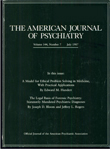Clinical neuropsychology is the study of the relationship between brain function on the one hand and human cognition, behavior, and emotions on the other. The field, which has grown rapidly in the past two decades, has both practical and academic applications. Practical applications include understanding more about neurological and neuropsychiatric disorders so that diagnosis, treatment, and rehabilitation of patients can be more individualized and meaningful. Ultimately, multidisciplinary efforts may help prevent the occurrence of these disorders. Academic objectives include more comprehensive investigation of how the healthy brain works by integrating information gathered from experiments using subjects with both healthy and damaged brains. Further, dissemination of this knowledge is essential. Students interested in the field of neuropsychology, as well as other health professionals, need to understand the kinds of cognitive impairments and behavioral difficulties patients experience without always needing to know in detail how to assess and rehabilitate the problems themselves.
Fractured Minds is designed to represent a series of introductory readings on clinical neuropsychology. The text is essentially divided into two sections. Chapters 1 and 2 provide a general basis for understanding the specific neuropsychological disorders highlighted in chapters 3–16. Chapter 1 describes the similarities and differences between clinical neuropsychology and other related disciplines, in addition to providing an overview of many different aspects of neuro~psychology. These include basic structural and functional neuro~anatomy, important assumptions and concepts used by neuropsychologists, an explanation of commonly used terms, and a discussion of cross-cultural issues in neuropsychology. In chapter 2, the basic steps that make up a comprehensive neuropsychological assessment are outlined, and a number of the most frequently used tests are described. This provides a novice reader with a sense of the basic tools in the armamentarium of the clinical neuropsychologist.
Each of the remaining 14 chapters, which are case studies, begins by highlighting a particular neurological or neuropsychological syndrome. There is a focus on a particular case or two, relating stories about specific people who have experienced these syndromes and how their problems have affected the lives of these patients. Each case study is preceded by a section discussing theoretical and neuropathological aspects of the disorder. When appropriate, there is focus on the clinical assessment, treatment, and rehabilitation of disorders such as epilepsy, head injury, and dementia. Other chapters, which describe less common disorders such as the inability to recognize body parts or faces, focus on research conducted to further understand the brain mechanisms involved in these abilities. Each chapter contains a number of references for students who are interested in additional information.
The book's goal is to provide the reader with a broad picture of clinical neuropsychology. Dr. Ogden's intent is that the book will serve as an introductory text in clinical neuropsychology that will capture the attention and interest of students without actually requiring them to learn “how to do it” (p. vii). It was written primarily for university and beginning graduate students, but it will also be of interest to health professionals who work with neurological patients. Dr. Ogden states that the book is neither a test manual nor a text to prepare the reader to practice as a neuropsychologist. Although not a substitute for clinical experience, the book provides insight and exposure by detailing the impact of cognitive problems on the lives of real patients. I thoroughly enjoyed the book, but I have been a neuropsychologist for several years. To determine whether the author's goals had been met, I shared the book with two undergraduate students with an interest but no formal training in neuropsychology, who are interning in our laboratory.
They felt the book was enjoyable, well written, and essentially met its goals. Of most importance to these students, who are struggling with career choices, the sections of the first chapter under the headings Defining Clinical Neuropsychology and Its Aims and The Relationship of Clinical Neuropsychology to Other Disciplines provided a helpful context for understanding the opportunities available to a psychology undergraduate. These provided them information about the roles involved in several job possibilities as well as several methods of exploring brain-behavior relationships. It became clear in our discussions that the first two chapters of the book provided a comprehensive background that enabled them not only to appreciate the case studies presented in later chapters but also to develop the language and understanding necessary for thoughtful analysis of other neuropsychological research. The case studies helped them by outlining major problems and considerations related to neurological disorders as well as personalizing the disorders by describing their impact on real patients. By using examples of the performance of these patients on neuropsychological tasks, Dr. Ogden graphically demonstrates the extent of their deficits and also clarifies the nature of their brain injuries with respect to assessment tools.
So, thank you, Dr. Ogden. Not only have I found my introductory text for neuropsychology, I think you have assisted in recruiting two bright, energetic students to our field!

